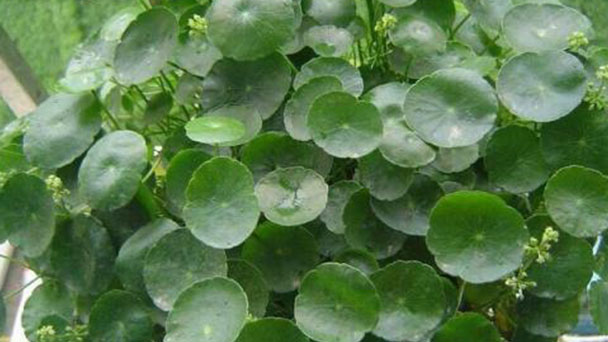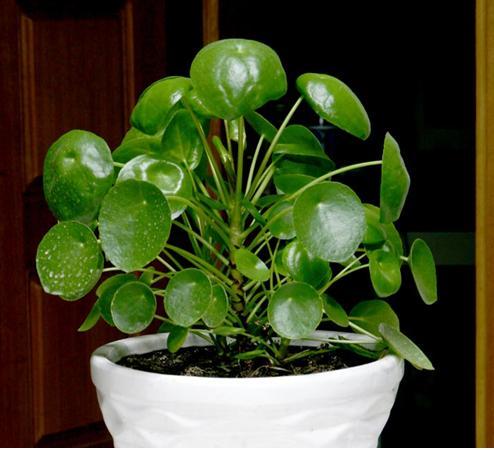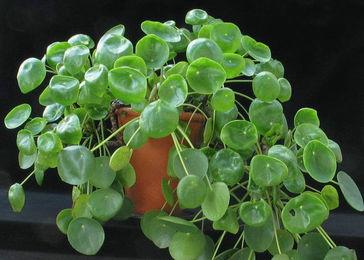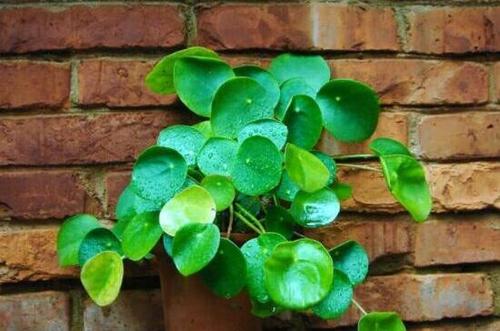Pilea peperomioides Diels profile
Written by Maggie
Nov 10 2021

Pilea Peperomioides Diels is a hardy and shade - loving plant. Although it is overcast, it also grows well in a sunny greenhouse, with a suitable temperature of about 15℃. Pilea Peperomioides Diels is suitable for growing on relatively moist and well-drained peat soil. It is also suitable for greenhouse and family potted plants in Yunnan and other areas outside south China.
Pilea Peperomioides Diels picture
Pilea Peperomioides Diels morphological characteristics
Pilea Peperomioides Diels are succulent perennial herbs, glabrous, tufted, with rhizomes. Stems are erect, thick, unbranched, 2 -- 13 cm tall, 5 -- 10 mm thick, nodes very dense, greenish, brownish when dry. The leaf is aggregated stem top, stem upper dense scaly stipules, leaves scar large, semicircular. The blade is fleshy, working paper, suborbicular or ovate, 2.5 9 cm long, 2-8 cm wide, thyroid, was born in petiole, apex obtuse or rounded, base rounded or emarginate, margin entire or light wave, the green, sage green below. It is working fine bee case, stalactite body thin rod, 0.1 0.2 mm long, above is obvious, basal veins 3, arc curve, at the top of the close to each other network knot, outgoing, lateral veins number to form a network, each other close at the edge of the bottom 2-3 to almost out from the top of the petiole, along with basal veins form radial veins, lateral veins not obvious. The petiole is 2 -- 17 cm long. Stipules are scaly, pale green, brownish when dry, triangular-ovate, ca. 7 mm long, apex short caudate acuminate, densely striated bellyose body. pilea peperomioides diels is a dioecious plant. The inflorescence is a single inflorescence in apical leaf axils, cymbose, 10-28 cm long, peduncle stout, 5-14 cm long, flowers loosely arranged on tortuous branches. Bracts are small, lanceolate, ca.5 mm long. Male flowers are pedicellate, purplish red, obovate when budding, ca. 2.5 mm long. It has 4 perianth, obovate, with short horn near apex outside and 4 stamens.The gynoecium is small and oblong. Female flowers are subsessile. It has 3 perianthp, unequal, middle one subequal, fruit less than half length, lateral two narrowly triangular, nearly 2 times shorter than middle one. Achenes are ovate, slightly flattened, askew, ca. 0.8 mm long, surface with purplish red verrucous protuberance. Flowering period is from April to July, fruit period from July to September.
Habitat of Pilea Peperomioides Diels
Pilea Peperomioides Diels is produced in Yunnan and Southwest Sichuan, China. It is often cultivated for ornamental use in some parks in southwest and North China. Model specimens were collected from Dali, Yunnan.
Pilea Peperomioides Diels is an important ornamental plant, which is widely cultivated in China. It is difficult to find their wild population.

Pilea Peperomioides Diels growth habits
Pilea Peperomioides Diels prefers shade, but they also grow well in a sunny greenhouse, with a suitable temperature of 16-20℃. It is suitable for growing on peat soil which is moist and well drained. Pilea Peperomioides Diels is very shade tolerant, as long as you can see the general newspaper light can grow, so it is very suitable for indoor potted families. Pilea Peperomioides Diels likes warm and humid environments, less than -4℃ will appear cold damage phenomenon, leaf color luster or even fall off. Loam, which likes loose and well-drained, is rich in humus. Humus can be taken from the shade of intermountain trees, or humus leaf soil and peat can be prepared by adding a little river sand, coal ash and basal fertilizer. In warm areas, flowering and firming are easy, while Pilea Peperomioides Diels are hardy and safe to winter outside in the south.
Pilea Peperomioides Diels main value
medicinal
Pilea Peperomioides Diels whole grass: Anti-inflammatory and detoxifying.Used for erysipelas and bone setting.
watch
Since the introduction of Pilea Peperomioides Diels to Europe in the early 20th century, it has been introduced and cultivated by botanical garden and garden lovers in Britain, Sweden, Norway and other countries. It is regarded as the treasure of indoor leaf-viewing flowers and is deeply loved by people. Its leaf shape is peculiar, the posture is beautiful. It grows fast, easy to propagate, suitable for greenhouses, courtyards and indoor cultivation. It is an ideal leaf-viewing plant worthy of promotion, as well as a good material for making and decorating bonsai. Some parks in southwest and North China are often cultivated for ornamental purposes. (Find more best indoor hanging plants here.)

Latest Updated
- Benefits of Bugleweed - 7 Science-backed Health Benefits
- Bugleweed Dangers & Side Effects - Is It Poisonous?
- How to Plant Evergreen Trees - What You Should Know
- When to Plant Evergreens - Grow Guide for Evergreen Trees
- 12 Wonderful Evergreen Shrubs for Your Garden
- 12 Popular Evergreen Plants with Pictures for Beginners
- When And How To Prune A Lilac Bush Like a Pro
- How to Grow & Care for Lilac Vine (Hardenbergia Violacea)
- Japanese Lilac Tree (Syringa Reticulata) Care & Propagation Guide
- Shumard Oak Pros and Cons - What to Know
Popular Articles
- Winter maintenance of Antirrhinum Majus
- How to Grow Terminalia Mantaly Tree
- How to Grow and Care for Crossostephium Chinense
- How to grow Antirrhinum Majus in spring
- Peristeria Elata (Dove Orchid) Profile: Info & Care Guide
- Underwatered Snake Plant (Sansevieria Trifasciata) - Signs And How To Fix
- How to Care for Brazilian Jasmine Plant (Mandevilla Sanderi)
- How to Grow & Care for Graptopetalum Purple Delight in Summer
- Rosa Chinensis (China Rose): Plant Growing & Care Tips
- How to Care for Baby Sun Rose (Aptenia Cordifolia)
